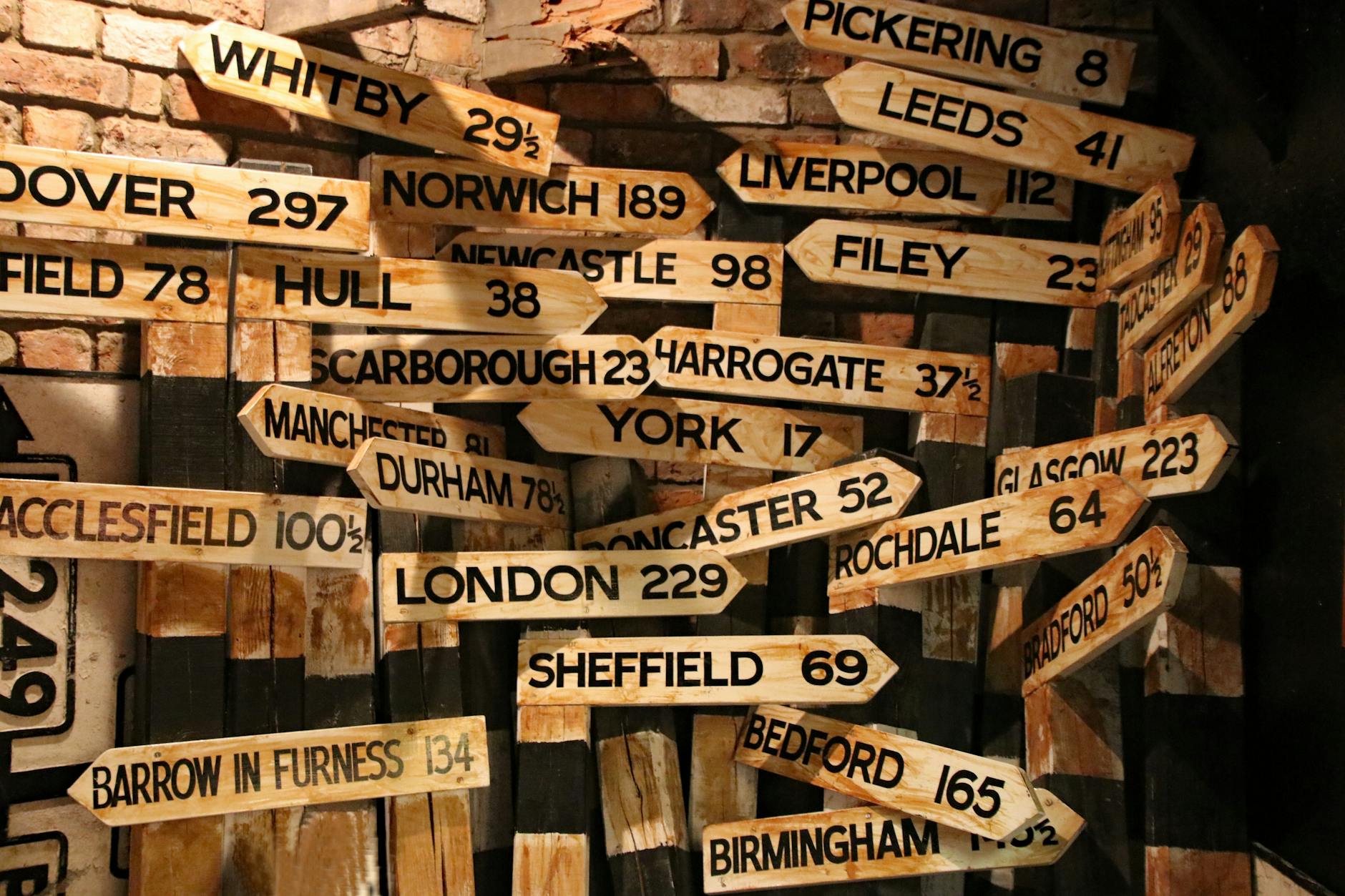When it comes to NBA lineups, die-hard fans and analysts alike always wonder which combination of players will dominate the court this season. Have you ever asked yourself, “What are the most effective starting lineups in the NBA right now?” Well, you’re not alone! The dynamics of NBA starting lineups 2024 are constantly shifting, making it exciting to track how coaches adjust their strategies. From best NBA lineups for defense to the most explosive offensive setups, understanding these configurations can give you a huge edge in fantasy basketball or sports betting. But why does it matter so much which players share the court? Because the right NBA lineup combinations can turn an average team into championship contenders overnight. Curious about the top NBA lineups for fantasy basketball and how recent trades are reshaping team chemistry? You should be! With the 2024 playoffs approaching, every lineup tweak can spark a winning streak or cause an unexpected slump. Dive deep into the world of NBA lineup strategies and discover the secrets behind the league’s hottest teams. Ready to unlock the power of these lineups and elevate your basketball knowledge? Let’s explore the game-changing insights that will keep you ahead of the pack!
How NBA Lineups Influence Winning Streaks: Top Strategies Coaches Use
When you dive into the world of NBA lineups, you quickly realize it’s more than just putting five guys on the court. Nope, it’s like a strategic chess game, but with dunks and three-pointers instead of pawns and knights. Coaches shuffle their players like a deck of cards, trying to find the perfect combination that can outscore, out-defend, and out-last the other team. But sometimes, you wonder if all this lineup juggling really makes a difference or it’s just a fancy way to confuse fans and players alike.
Let’s start with the basics, or at least what supposed to be basics. An NBA lineup typically consist of two guards, two forwards, and a center, right? Well, maybe, but modern basketball is way more flexible than that. For example, the Golden State Warriors often run what they call a “small-ball lineup” where they play no true center at all. Instead, they have smaller, quicker players who shoot threes and switch on defense like crazy. It’s weird to see a “center” shooting threes from the corner, but hey, that’s the NBA for you.
Here’s a quick table that shows some popular NBA lineups and their strengths/weaknesses. Not really sure why this matters, but it might help you understand what coaches are thinking:
| Lineup Type | Typical Players | Strengths | Weaknesses |
|---|---|---|---|
| Traditional | 2 guards, 2 forwards, 1 center | Balanced offense and defense | Slower pace, less spacing |
| Small-ball | 3 guards, 2 forwards | Faster pace, better spacing | Lack of size, rebounding issues |
| Defensive lineup | Defensive specialists | Tough on defense | May lack scoring punch |
| Offensive lineup | Scorers, shooters | High scoring potential | Can be defensively weak |
Now, if you think coaches just pick whoever is freshest or most popular, you’d be dead wrong. There’s tons of data and analytics behind these decisions. Like, did you know that some teams track every single player’s shooting percentage when paired with different teammates? It’s like a complicated math problem, but instead of x and y, you got Steph Curry’s three-point % when playing with Draymond Green or whatever.
Speaking of analytics, here’s a little list of factors that influence NBA lineups decisions:
- Player matchups – Who can guard who? Sometimes, a coach put a different lineup on the floor just to stop a specific player.
- Fatigue – Players get tired, duh. So the lineup might change depending on who needs rest.
- Foul trouble – When a player gets too many fouls, the lineup shifts to cover that hole.
- Pace – Some lineups are faster, some slower. Coaches adjust depending on game flow.
- Injuries – Obvious, but sometimes unexpected injuries force weird lineup combos.
Honestly, it’s kinda like a giant puzzle with a million pieces that never fully fit. Maybe it’s just me, but I feel like fans often overthink lineups. Like, yeah, it matters, but at the end of the day, the best players usually make the difference regardless of the lineup. Unless you got a lineup full of rookies and benchwarmers, then you probably losing.
To illustrate this, check out this simplified example of a lineup rotation from a recent NBA game:
| Minute | On-Court Players | Notes |
|---|---|---|
| 0-5 | Curry, Thompson, Green, Wiggins, Wiseman | Starting lineup, balanced |
| 5-10 | Curry, Poole, Green, Wiggins, Wiseman | Poole sub in, more shooting |
| 10-15 | Looney, Wiggins, Green, Poole, Curry | Looney comes in for defense |
| 15-20 | Curry, Thompson, Green, Wiggins, Looney | Back to starters, fresh legs |
This rotation show how coaches mix and match lineups to keep players fresh while maintaining team identity. Not every substitution is about offense, sometimes it’s just about giving a player a breather or changing defensive schemes.
Now let’s talk about the weirdest NBA lineups you may ever seen. For example, some teams have run four-guard lineups, which sounds crazy but actually works sometimes. It’s like having all your players handle the ball and shoot threes, but then you lose all the size inside. Or how about the “death lineup” that the Warriors popularized, featuring Curry, Thompson, Green, Iguodala, and Livingston? That lineup was so deadly, other teams just gave up.
Unlocking NBA Lineup Secrets: Proven Tips for Building Championship Teams
When You Look at NBA Lineups: What’s Really Going On?
So, NBA lineups, huh? They’re like the secret sauce to winning games or just, you know, losing embarrassingly. Not really sure why this matters, but coaches spend more time juggling these lineups than I spend deciding what to eat for dinner. Seriously, the “best NBA lineups for defense and offense” change game to game like my mood on a Monday morning.
First off, let’s talk about what exactly a lineup is. It’s basically the five players who start the game or come together on the court at the same time. Simple, right? But then comes the complexity — who plays with who, what positions, and all that jazz. Some coaches swear by small-ball lineups, others live for the big men on the floor. Maybe it’s just me, but I feel like sometimes lineups are more about ego than strategy.
Here’s a quick breakdown of common NBA lineup types:
| Lineup Type | Description | Example Players |
|---|---|---|
| Small-Ball Lineup | Usually 3 guards + 2 small forwards, fast-paced | Steph Curry, Klay Thompson, Draymond Green, Andrew Wiggins, Kevon Looney |
| Big-Man Lineup | Featuring 2 or 3 big guys for inside presence | Joel Embiid, Clint Capela, Tobias Harris, Tyrese Maxey, James Harden |
| Balanced Lineup | Mix of guards and forwards for versatility | Luka Doncic, Kyrie Irving, Maxi Kleber, Dorian Finney-Smith, Dwight Powell |
These are just examples, obviously. Coaches switch it up faster than you can say “timeout.” What’s fun to watch is how some lineups just seem to magically click, while others look like a hot mess on the floor.
Why Coaches Obsess Over NBA Lineups
Coaches tweak their NBA lineups for maximum efficiency because every possession counts. You know when a lineup is good because the team gets stops on defense and scores buckets on offense. But when they don’t? It’s like watching a soap opera unfold in slow motion. Players get confused, pass up open shots, and don’t even try to box out. Ugh.
One thing that sometimes gets overlooked is chemistry. Yeah, stats are cool and all, but if two players just can’t stand each other, that lineup is doomed. For instance, having two ball handlers who both want the ball all the time is like having two captains on a sinking ship — chaos and no progress.
The Role of Advanced Stats in NBA Lineups
Nowadays, it ain’t just about who looks good or who’s the flashiest. There’s a whole bunch of nerd stuff called advanced stats that help decide which lineup should be on the court. Stuff like:
- Offensive Rating (ORtg): Points scored per 100 possessions.
- Defensive Rating (DRtg): Points allowed per 100 possessions.
- Net Rating: The difference between ORtg and DRtg, basically how good or bad a lineup performs overall.
- Plus/Minus (+/-): How the team does when a specific lineup is playing.
Here’s a sample table showing how two hypothetical lineups could compare:
| Lineup A | ORtg | DRtg | Net Rating | Plus/Minus |
|---|---|---|---|---|
| Curry, Thompson, Green, Wiggins, Looney | 115 | 105 | +10 | +8 |
| Embiid, Harris, Maxey, Harden, Capela | 110 | 108 | +2 | +1 |
Not saying these numbers tell the whole story, but they sure help coaches make informed decisions. Maybe some players are better in crunch time, others more for running the fast break. It’s a whole science.
Lineup Changes in Playoffs vs Regular Season
Something kinda wild is how NBA playoff lineups differ from regular season lineups. In the regular season, coaches might give minutes to rookies or bench players to rest stars. But playoffs? Oh boy, it’s all business. Starters play more minutes and benches shrink. Coaches rely heavily on lineups that can handle pressure.
It’s not unusual to see a playoff lineup that’s more defensive minded, with less scoring punch but better ability to shut down opponents. Also, foul trouble becomes a huge factor, so coaches gotta think on their feet. That’s why some lineups that worked wonders in the regular season flop in playoffs.
Tips for Analyzing NBA Lineups Like a Pro
If you wanna sound smart at your next basketball party, here’s a quick cheat sheet on how to break down NBA lineups:
- Look at player roles — who’s the primary scorer, facilitator, defender?
- Check
The Ultimate Guide to NBA Lineup Optimization for Maximum Team Performance
When it comes to nba lineups, there’s always a lot of talk about who starts, who benches, and what combinations works best. Honestly, it’s kinda confusing sometimes, because coaches change their lineups like everyday. You might think the best players should always be on the court, but nah, that’s not always how it goes. Sometimes it’s all about matchups, other times maybe the coach just wanna try something new. Not really sure why this matters, but fans obsess over every little change like it’s the end of the world.
Why Lineups Matter So Much?
Okay, so the thing about best nba starting lineups is that they set the tone for the whole game. If your starting five sucks, then good luck making a comeback later. But even the best starters can suck sometimes (yeah, I said it). Sometimes coaches put bench players in the starting lineup to mix things up or save the stars for crunch time. It’s like a chess game, except the pieces are tall and throw balls in hoops.
You know what’s weird? The bench players sometimes become the unsung heroes. Like, you wouldn’t expect a guy who sits during the first quarter to suddenly drop 20 points in the second. But it happens, and that’s why keeping an eye on the nba bench player lineups is just as important as staring at the starting five.
Common Types of NBA Lineups
To make things easier, here’s a quick table showing some popular lineup types you might hear about:
| Lineup Type | Description | When Usually Used |
|---|---|---|
| Small Ball Lineup | More guards and wings, less big men | Against teams with slow bigs |
| Big Lineup | More big men, less guards | To dominate rebounds and paint defense |
| Defensive Lineup | Players known for defense, less scoring focus | When protecting a lead |
| Offensive Lineup | High scoring, fast-paced players | To catch up or blow out opponents |
Maybe it’s just me, but I feel like coaches sometimes overthink these lineups. Like, can’t we just put the best players out there and call it a day? Guess not.
Practical Insights: How To Analyze NBA Lineups Yourself
If you wanna get into the nitty-gritty of analyzing nba lineups for fantasy basketball or just to impress your friends, here is a quick list you should follow:
- Check the player combinations – Some players just works better together. Like Steph Curry and Draymond Green are almost inseparable on court.
- Look at minutes played – If a player only plays 10 minutes, they probably don’t matter much in the lineup.
- Consider injuries and rest – Lineups change a lot when players are hurt or resting.
- Understand pace of play – Some lineups are designed to play super fast, others slow and methodical.
- Matchups are key – Coaches tailor lineups to exploit or defend against specific opponents.
Honestly, this sounds like a lot, but once you get the hang of it, it’s kinda fun to try predicting what lineup a coach gonna throw out next game.
Example: Golden State Warriors Lineup Variations
Let’s take a look at how Golden State Warriors use their lineups sometimes, just for example:
| Player | Position | Typical Role | Lineup Type Usually Seen In |
|---|---|---|---|
| Stephen Curry | PG | Scorer/Playmaker | Small Ball, Offensive |
| Klay Thompson | SG | Shooter/Defender | Small Ball, Defensive |
| Draymond Green | PF | Defender/Playmaker | Small Ball, Defensive |
| Kevon Looney | C | Rebounder/Defender | Big Lineup, Defensive |
| Andrew Wiggins | SF | Scorer/Defender | Small Ball, Offensive |
This lineup changes a lot, like sometimes Andrew Wiggins rests and they bring in a rookie or bench guy. It messes with the chemistry sometimes, but hey, that’s NBA for ya.
Why You Should Care About NBA Lineups
You might wonder, “why should I care about all this lineup talk if I just wanna watch the game?” Good question! Knowing the most effective nba lineups can actually make watching games way more interesting. You start noticing the subtle changes, the strategy behind who’s out there. Also, if you’re into fantasy sports or betting, knowing these lineups is like having a secret weapon.
Alright, so here’s a quick list of reasons why paying attention to lineups is worth your time:
- Understand team strategy better
7 Game-Changing NBA Lineup Adjustments That Boost Your Team’s Success
NBA lineups be one of those things that fans and analysts talk bout way too much, but honestly, it’s kinda interesting to dig into. You know, which players start, who comes off the bench, and how coaches shuffle their best guys around. It’s not just about the talent, but also how they mesh together on the court. Some lineups works magic, others flop hard — and sometimes it’s just a mystery why.
Alright, so let’s start with the basics. An NBA lineup usually consist of five players: two guards, two forwards, and a center. But, nowadays, the game is flexible, and positions blur like never before. You might see a small-ball lineup with no traditional center at all, or a team going big with stretch bigs who can shoot from anywhere on the court. Not really sure why this matters, but it’s kinda fun to watch how these combos influence the game flow.
Popular NBA Lineups Types
| Lineup Type | Description | Pros | Cons |
|---|---|---|---|
| Traditional | Two guards, two forwards, one center | Balanced size and skill | Sometimes too slow |
| Small-ball | Usually no center, more shooting guards/forwards | Fast pace, great spacing | Can get dominated inside |
| Big Lineup | More big men, less guards | Dominates paint and rebounds | Slower and less shooting |
| Dual Point Guard | Two playmakers running the floor | Creates lots of assists | May lack size |
If you think about it, the best NBA lineups for offense often come with shooters that can spread the floor. Like, Golden State Warriors with Steph Curry, Klay Thompson, and Draymond Green running around. They create space like nobody else, and their lineup versatility makes defenses lose their minds. But then again, defense sometimes gets overlooked when talking about lineups.
Why Coaches Shuffle NBA Lineups So Much?
Coaches don’t just set a lineup and forget about it. They constantly tweak it, sometimes every game, other times every quarter. Maybe it’s just me, but I feel like this constant shuffling is both a blessing and a curse. You want your best players on the floor, but also want to keep the chemistry flowing. And injuries? Forget about it, that messes everything up.
Take a look at this simple example of how a coach might adjust:
| Quarter | Starting Lineup | 2nd Unit Lineup | Reason for Change |
|---|---|---|---|
| 1st | PG, SG, SF, PF, C | Bench PG, Bench SG, Bench SF | Starting fresh, best players out |
| 2nd | Bench PG, SG, SF, PF, C | Original PG, Bench SG, SF, PF | Rest starters, test bench combos |
| 3rd | Mix of starters and bench players | Remaining bench | Matchup adjustments |
| 4th | Best five players | Scrubs or resting players | Closing out the game |
This kinda lineup management is vital, especially in crunch time when every possession counts. But sometimes, it looks like coaches just throw darts at a board to pick lineups. Not saying that’s always the case, but it feels like that.
The Impact of NBA Lineups on Game Stats
You can’t talk about NBA lineups impact on game performance without mentioning stats. Lineups are often analyzed by their efficiency ratings, plus-minus stats, and how well they defend or score. But, sometimes stats lie or don’t tell the full story. For example, a lineup might have a poor plus-minus because they play against the other team’s best guys all the time.
Here’s a quick summary of key stats people look at for lineups:
- Offensive Rating (ORtg): Points scored per 100 possessions.
- Defensive Rating (DRtg): Points allowed per 100 possessions.
- Net Rating: ORtg minus DRtg.
- Plus-Minus: Overall point differential when lineup is on court.
- Pace: How fast the lineup plays.
Example: A Hypothetical Lineup Performance Table
| Player 1 | Player 2 | Player 3 | Player 4 | Player 5 | ORtg | DRtg | Net Rating | Pace |
|---|---|---|---|---|---|---|---|---|
| Guard A | Guard B | Forward A | Forward B | Center A | 110 | 105 | 5 | 98 |
| Guard C | Guard D | Forward C |
NBA Lineups Explained: How Star Player Combinations Drive Victory
When you talk about NBA lineups, you’re diving into a rabbit hole that’s deeper than most folks expect. Seriously, it’s not just about putting five players on the court and hoping for the best. Coaches spend hours tweaking, switching, and trying to find the perfect combo that clicks. But here’s the thing — what even defines a “perfect lineup”? Is it the one that scores the most points, or the one that defends the best? I guess it depends on who you ask.
Anyway, let’s start with some basics. An NBA lineup is typically made up of two guards, two forwards, and a center, but sometimes you see all kinds of weird formations. You know, like “small ball” where they throw in five shooters and hope to outpace the opposition. Not really sure why this matters, but some teams swear by it, and others think it’s a disaster waiting to happen.
Why NBA Lineups Matter
- They dictate the pace of the game
- Influence defensive and offensive strategies
- Affect player stamina and rotations
- Create matchup advantages or disadvantages
But honestly, coaches sometimes look like they’re just guessing who will perform best. Like last season, the Lakers tried some pretty wild mixes, and some worked, some didn’t. It’s kind of like cooking without a recipe — sometimes you nail it, sometimes you burn the kitchen down.
Common Types of NBA Lineups
| Lineup Type | Description | Pros | Cons |
|---|---|---|---|
| Traditional Lineup | 2 Guards, 2 Forwards, 1 Center | Balanced offense and defense | Can be slow against fast teams |
| Small Ball | More Guards and Forwards, fewer Centers | Fast-paced, lots of shooting | Vulnerable to inside scoring |
| Defensive Lineup | Players known for defensive skills | Limits opponent scoring | May struggle offensively |
| Offensive Lineup | Focuses on high scorers | High scoring potential | Defense often sacrificed |
Now that you got the gist, I wanna throw in some real talk about best NBA lineups for winning games. It’s funny because the “best” lineup changes from game to game, and sometimes your star player just won’t perform. Maybe it’s just me, but I feel like the hype around certain lineups is a bit overblown.
Practical Insights: How Coaches Choose Lineups
- Matchups: Coaches look at who the other team is putting on court and adjust accordingly.
- Player Health: Injuries force changes all the time.
- Momentum: If a lineup is clicking, they keep it on longer.
- Opponent weaknesses: Exploit the other team’s weak defenders or slow players.
Example Lineup Breakdown: Golden State Warriors
| Position | Player | Role | Notes |
|---|---|---|---|
| PG | Stephen Curry | Shooter/Playmaker | Key for spacing the floor |
| SG | Klay Thompson | Shooter/Defender | Great catch and shoot skills |
| SF | Andrew Wiggins | Defender/Slasher | Brings athleticism |
| PF | Draymond Green | Defensive Anchor | Facilitator on offense |
| C | Kevon Looney | Rebounder/Screen Setter | Physical presence inside |
This lineup is known for incredible spacing which allows Curry and Thompson to shoot from anywhere. But the defense can be shaky sometimes, especially if Green isn’t on his A-game. So, the NBA lineup optimization tips for defense and offense balance becomes crucial.
Stuff to Keep in Mind About NBA Lineups
- Not all players fit every lineup seamlessly.
- Chemistry sometimes beats talent on paper.
- Fatigue and foul trouble can force unexpected changes.
- Coaches sometimes experiment during less important games, so don’t panic if you see weird combos.
Quick Tips For Fantasy Basketball Players
- Look at starting lineups but also bench players who get significant minutes.
- Watch for changes due to injury or rest days.
- Consider team pace and style — a fast-paced team might have high scoring lineups.
- Check the NBA lineups for fantasy basketball insights often, because things change fast.
A Simple Table to Track Lineup Efficiency (Hypothetical)
| Lineup Combination | Offensive Rating | Defensive Rating | Net Rating |
|---|---|---|---|
| Curry-Thompson-Wiggins-Green-Looney | 115 | 105 | +10 |
| Small Ball (No Center) | 120 | 95 | +25 |
| Defensive Lineup (Green + more) | 100 | 110 | -10 |
Mastering Defensive and Offensive NBA Lineups: Secrets from Top Teams
NBA lineups are one of those things that fans loves to debate about but rarely get it right on the first try. You see, figuring out the best combination of players on court is like solving a puzzle that keeps changing every game. Some coaches swear by their starting five, while others think bench players are the real MVPs. Not really sure why this matters, but the way teams shuffle their NBA lineups for optimal defense and offense can sometimes be a game changer – or a total disaster.
One thing about NBA lineups with player statistics is that it’s not just about who scores the most points. Sure, points are flashy, but sometimes the guy who barely scores but grab 10 rebounds or dish out 8 assists is the real glue guy. Coaches looks at so many factors like player chemistry, matchups, stamina, and even the crowd’s energy. It’s almost like a science, but with a pinch of gut feeling thrown in.
Here’s a quick look at how some popular NBA teams mix their lineups, and why it matter:
| Team | Starting Lineup | Key Strength | Weakness |
|---|---|---|---|
| Los Angeles Lakers | LeBron James, Anthony Davis, Russell Westbrook, Austin Reaves, D’Angelo Russell | Experience and versatility | Aging players, injury risks |
| Golden State Warriors | Stephen Curry, Klay Thompson, Draymond Green, Andrew Wiggins, Kevon Looney | Shooting and defense | Lack of size inside |
| Milwaukee Bucks | Giannis Antetokounmpo, Khris Middleton, Jrue Holiday, Bobby Portis, Brook Lopez | Athleticism and defense | Perimeter shooting inconsistency |
Maybe it’s just me, but I feel like these lineups kinda tell you a lot about a team’s strategy. Like the Lakers with their mix of veterans and young bloods is kinda a gamble every night. You never really know if they gonna click or just mess it all up.
Now, if you wanna dive deeper into best NBA lineups for scoring efficiency, you gotta understand how coaches use small-ball or big-ball lineups. Small-ball means they play with shorter, faster guys who can shoot from outside and run the floor like crazy. Big-ball is all about muscle and size, with more big men to dominate inside. Here’s a rough example:
- Small-ball lineup: PG, SG, SF, PF, SF (yes, two small forwards and no center sometimes)
- Big-ball lineup: PG, SG, SF, PF, C (traditional lineup with a true center)
The choice between these lineups depends on who the opponent is. If you up against a team that dominates the paint, you might want to go small-ball and stretch the floor. But against a team that shoot a lot of threes, you might wanna pack the paint with big men to contest shots. Confusing? Yeah, it kinda is, especially when coaches switch lineups multiple times per game.
Another thing that often gets overlooked is how NBA lineups impact player fatigue and injury risk. If a coach overplays a certain lineup without enough rest, players get tired and their performance drops. Sometimes you see star players looking sluggish in the 4th quarter because they been playing non-stop since the tip-off. That’s why load management became a buzzword in recent years – it’s all about keeping players fresh for playoffs.
Here’s a little list of factors coaches consider when adjusting lineups mid-game:
- Opponent’s defensive scheme
- Player’s current form and stamina
- Matchup advantages or mismatches
- Game situation (leading or trailing)
- Foul trouble
You might think coaches just pick the best players and call it a day, but nah, it’s way more complicated. Sometimes, a bench player who barely gets minutes can suddenly become the X-factor if he exploit a matchup. It’s like chess, but on hardwood.
If you wanna track how lineups affect team performance, a lot of analysts use something called plus-minus stats. Basically, it shows the point difference when a particular lineup is on the floor. So if a lineup has a +15, it means the team outscored the opponent by 15 points during their time together. Sounds simple, but it gets tricky because you have to factor in who they played against, pace of the game, and stuff like that.
Here’s an example table of a hypothetical team’s lineup plus-minus stats:
| Lineup | Minutes Played | Plus/Minus | Notes |
|---|---|---|---|
| PG, SG, SF, PF, C | 120 | +30 | Balanced lineup |
| PG, SG, SF, SF, PF | 45 | +10 | Small-ball, fast-paced |
Why NBA Coaches Shuffle Lineups: Insider Strategies to Outsmart Opponents
NBA lineups have been a hot topic for basketball fans and analysts alike, but sometimes it feels like nobody really know what they’re talking about. I mean, sure, you can read tons of stats and charts, but at the end of the day, basketball is unpredictable, right? So, let’s dive into the world of NBA lineups and see what makes them tick, or maybe what breaks them sometimes.
Why care about best nba lineups for defense and offense? Well, some people say it’s all about offense, others swear defense wins championships. Not really sure why this matters, but coaches spend hours tweaking who plays with who, so it must be important. For example, take the Golden State Warriors when they had Steph Curry, Klay Thompson, and Draymond Green on the floor together. That lineup was lethal offensively, but sometimes their defense left a lot to wish for.
Breakdown of a Typical NBA Lineup
| Position | Player Role | Key Skills | Common Mistakes |
|---|---|---|---|
| Point Guard | Playmaker, Shooter | Ball handling, passing | Turnovers, poor defensive IQ |
| Shooting Guard | Scorer, Perimeter Defense | 3-point shooting, athleticism | Over-dribbling, fatigue |
| Small Forward | Versatile scorer | Driving to basket, defense | Inconsistent shooting |
| Power Forward | Rebounder, Defender | Post moves, toughness | Foul trouble, slow footwork |
| Center | Rim protector | Shot blocking, rebounds | Limited shooting range |
Maybe it’s just me, but I feel like sometimes these roles get blurred, especially in modern NBA where everyone can shoot threes now. The old-school lineups where you had a true center and two big men feel kinda rare nowadays.
How Coaches Choose Their Lineups
Now, coaches don’t just put players on the floor randomly. No, they analyze NBA lineups by player efficiency rating (PER) and other analytics. But sometimes, it looks like they just pick whoever’s hot or who’s got the best hair day. Jokes aside, the chemistry between players matters more than some fancy stat might show.
For instance, the Lakers’ lineup featuring LeBron James and Anthony Davis is all about versatility and switching on defense. But when AD gets injured (which he does often, sigh), the whole lineup’s effectiveness drops like a rock. So, injuries are a big wildcard in lineup planning.
Top 3 Most Effective NBA Lineups This Season (2023-2024)
| Team | Lineup Combination | Strength | Weakness |
|---|---|---|---|
| Denver Nuggets | Jokic, Murray, Porter Jr., Millsap, Gordon | Balanced offense/defense | Perimeter defense issues |
| Miami Heat | Butler, Herro, Adebayo, Lowry, Strus | Defensive intensity | Lack of consistent shooting |
| Boston Celtics | Tatum, Brown, Smart, Horford, Williams | Star power and depth | Bench depth concerns |
By the way, the Nuggets lineup with Jokic is like a chess game on the court, every move calculated. But man, their perimeter defense sometimes looks like Swiss cheese. Not sure how they still win so many games with that.
Why Do Some Lineups Fail Miserably?
You ever wonder why some lineups just flop no matter how talented the players? It’s not all about stats, trust me. Sometimes, egos clash, or players just don’t vibe well together. A great example is when a team tries to force a “super lineup” with too many ball-dominant stars. It usually backfires because they all want the ball at the same time.
Here’s a quick list of common lineup fails:
- Too many players who need the ball to score
- Lack of defensive specialists
- Poor communication on switches and rotations
- Fatigue from overplaying starters
- Not adjusting for opponent’s strengths
Practical Tips for Understanding NBA Lineups Better
- Watch games with an eye on who’s on the floor, not just who’s scoring.
- Look at lineups during crunch time (last 5 minutes) to see who the coach trusts.
- Check stats like +/-, which show how the team performs with a certain lineup.
- Remember that sometimes the “best” lineup isn’t the most flashy one.
A Quick Glance at Popular NBA Lineup Combinations (2024)
| Lineup Type | Description | Example Players |
|---|---|---|
| Small Ball | Fast, shooting-heavy lineup | Curry, Thompson, Green, Wiggins, Poole |
| Traditional Big |
Best NBA Lineup Formations for Different Play Styles: What You Need to Know
When it comes to NBA lineups everybody always seem to have an opinion, but not many really understands what goes into making the perfect squad on the court. I mean, sure, you see the starting five and bench players listed, but that’s just the surface, right? The real magic happens in how coaches shuffle players around during the game, which sometimes looks like a chaotic mess to us viewers but somehow it works. Maybe it’s just me, but I feel like this lineup stuff is more complicated than it looks.
First off, what even defines a good NBA lineups strategy? Coaches look at a bunch of factors — defense, offense, stamina, matchup against the opposite team, and sometimes just gut feeling. There’s no crystal ball, even if we fans wish there was. So here’s a quick example of how a team might organize their players:
| Position | Starter | Bench Option |
|---|---|---|
| PG | Chris Paul | Rajon Rondo |
| SG | Devin Booker | Cameron Payne |
| SF | Mikal Bridges | Torrey Craig |
| PF | Jae Crowder | E’Twaun Moore |
| C | Deandre Ayton | Bismack Biyombo |
This is a Phoenix Suns style lineup, but dont take it as gospel, because lineups change game by game.
Now, the thing is, coaches don’t just put their best players on court and call it a day. Nah, they think about best NBA lineups for defense or offense, sometimes even special lineups for small stretches to exploit a weakness. For example, a small-ball lineup where they play four guards and one big man might be speedy and shoot better from outside but could get totally wrecked on rebounds. It’s like trading one strength for another, and it can either work like a charm or be a disaster.
Not really sure why this matters, but some people obsess over the most effective NBA lineups for three-point shooting. I guess in this era where everyone shoots threes, having shooters in the lineup is a must. But hey, if you got no defense, those threes don’t mean jack when the other team is scoring at will.
Here’s a simplified list of what coaches might consider when building an NBA lineups rotation:
- Player stamina and minutes played
- Matchups against opposing players
- Current form and confidence
- Injury status
- Team chemistry and communication
- Specific game plan (defensive or offensive focus)
One thing that confuses me a little is how some players perform super well in one lineup but look lost in another. Like, you put a player in a certain spot and suddenly he can’t hit a shot or defend properly. Maybe it is about chemistry or roles, but it’s kinda weird.
Check this out for a moment: if a team has a star player who’s a volume shooter, the lineup probably needs someone to space the floor and another guy to do the dirty work like crashing boards and setting screens. Without those roles fulfilled, the star player might struggle or get tired fast.
| Role | Typical Player Style | Example |
|---|---|---|
| Primary ball-handler | Good passer, controls pace | Stephen Curry |
| Shooter/Spot-up threat | Great from 3-point line | Klay Thompson |
| Defensive stopper | Locks down best scorer | Marcus Smart |
| Rebounder/Enforcer | Physical, gets rebounds | Rudy Gobert |
| Energy guy | Hustle, fast breaks | Derrick Rose |
I was reading somewhere that the “best NBA lineups for fast breaks” usually have quick guards and wings who can run the floor at lightning speed. But if you got no size, the other team might exploit you in the paint. It’s like a balancing act on a tightrope.
Also, bench depth can’t be overlooked in this whole lineup discussion. Some teams got amazing starters but their bench is so weak it kills their chances in the playoffs. Coaches gotta manage minutes carefully, so starters dont burn out but bench players dont feel useless either.
Here’s a little practical tip for fantasy basketball fans or those who just wanna understand lineups better: watch how often a player is subbed in and out, which lineup combinations get the most minutes, and who they play with on the court. Sometimes the magic is in those subtle lineups that don’t make headlines.
To wrap it up (or at least try to), NBA lineups significance in winning games can’t be overstated. It’s not just about talent, but how players fit together like puzzle pieces. And with the way basketball changes every year — small ball, big lineups, pace and space — coaches gotta adapt or
NBA Lineup Analytics: Using Data to Unlock Winning Team Strategies
NBA Lineups: What’s The Deal With Them Anyway?
If you been watching basketball for any amount of time, you probably heard about best NBA lineups for defense or how some teams switch up their NBA starting lineups for better chemistry. But, honestly, what does it even mean? I mean, sure, coaches shuffle players around, but it ain’t like they’re playing musical chairs for fun, right? So let’s dive into this mess and see what kinda magic or madness goes behind these NBA lineups.
First off, a lineup in NBA means the group of five players on the court at the same time. You got your point guard, shooting guard, small forward, power forward, and center, but sometimes these roles blur so much that you wonder if anyone really knows what they’re doing. Coaches mix and match these players depending on who’s hot, who’s injured, or who just ain’t getting along with the others (yeah, team chemistry is a thing, believe it or not).
Why Do NBA Lineups Matter?
Not really sure why this matters, but apparently some lineups just click better than others. For example, take the most effective NBA lineups for three-point shooting. When a team puts out five shooters who can drain threes all game long, defenses get real nervous, and suddenly, the paint opens up like magic. But if you got a lineup full of big men who can’t shoot, then good luck with spacing.
Here’s a quick table showing a hypothetical example of two different lineups and their main strengths:
| Lineup Type | Strengths | Weaknesses | Best Used Against |
|---|---|---|---|
| Shooter Heavy Lineup | Great 3-point shooting, spacing | Weak in paint defense | Teams with slow big men |
| Defensive Big-Men Lineup | Dominates rebounds, shot-blocking | Poor perimeter defense | Teams that rely on outside shooting |
Now, you might be thinking, “Alright, that’s clear, but how does this change during a game?” Well, coaches are like chefs, tossing in different ingredients depending on the taste they want. Maybe your star player’s tiring, so you bring in a fresh shooter. Or maybe you want to slow down the opponent’s fast break, so you sub in a bigger lineup to clog the lanes.
The Most Common NBA Lineup Types
Here’s a list (because who doesn’t love a list?) of some popular lineup types and what makes them tick:
- Small Ball Lineup: Tiny players, big speed. They shoot a lot, run fast, but often get muscled in the paint.
- Big Man Lineup: Heavy on centers and power forwards, dominates inside but might struggle with fast guards.
- Balanced Lineup: A little bit of everything, kinda like a safe choice but sometimes lacks the wow factor.
- Defensive Specialist Lineup: Focused on stopping the other team from scoring, but might not score much themselves.
Maybe it’s just me, but I feel like coaches sometimes overthink these lineups. Like, just play the best players together and call it a day, right? But nooo, gotta consider matchups, player fatigue, and all that jazz.
Practical Insight: How To Analyze NBA Lineups Yourself
If you wanna sound smart at your next basketball hangout, here’s a quick cheat sheet to spot what kind of lineup is on the court:
| Step | What To Look For | Why It Matters |
|---|---|---|
| Count the shooters | Are there 3+ players shooting threes? | Indicates a small ball or shooter-heavy lineup |
| Check the height average | Are the players mostly tall or short? | Helps determine if it’s a big man or small ball setup |
| Look at defensive stats | Blocks, steals, defensive rebounds | Shows if defense is the focus |
| Observe pace and spacing | Fast breaks, wide spacing on court | Reveals offensive strategy |
Using this knowledge, you can impress your friends by saying things like, “Oh, they went with the best NBA lineup for fast breaks, I see what they’re doing.” Trust me, it works every time.
NBA Lineups and Player Chemistry: A Love-Hate Story
Now here’s the thing nobody tells you — even if a lineup looks perfect on paper, the players gotta actually like each other. Chemistry isn’t just a buzzword; it can make or break a team. Sometimes a lineup with all-stars fails because they can’t pass the ball or trust each other. Conversely, a lineup with average players but killer chemistry might upset the big dogs.
I remember this one time, the Golden State Warriors had a lineup where they all just seemed to read each other’s minds. They moved
How to Create Winning NBA Lineups with the Perfect Balance of Experience and Youth
When it comes to NBA lineups analysis for winning games, it’s like a whole science that most fans don’t really pay much attention too. But if you’re a die-hard basketball lover or a fantasy league junkie, then knowing who plays with who, and when, might actually make a difference. Not saying it’s gonna turn you into the next coach of the Lakers or anything, but hey, it can’t hurt to understand what’s going on on the court, right?
What is an NBA Lineup Anyway?
So, an NBA lineup is basically the group of five players a coach puts on the court at the same time. Simple enough? But here’s the catch: not all lineups are created equal. Some lineup combinations are absolute magic, while others just… meh. Coaches shuffle players around like a deck of cards trying to find that perfect balance of defense, offense, and pure hustle. Sometimes it works, other times it’s a total disaster, but hey, that’s basketball for ya.
Why Should You Care ‘Bout Different NBA Lineups?
Not really sure why this matters, but the best NBA lineups for defense and offense can totally change the tide of the game. For example, a team might run a smaller, quicker lineup to speed up the pace and score more points, or go big and brawl in the paint with taller players. It’s like chess, but with sweat and sneakers.
Here’s a quick table to show you why lineups matter:
| Lineup Type | Purpose | Typical Players Involved | Effect on Game |
|---|---|---|---|
| Small Ball | Speed, shooting | Guards and small forwards | Faster pace, more 3-pointers |
| Big Lineup | Defense, rebounding | Centers and power forwards | Controls paint, tougher defense |
| Balanced Lineup | Mix of offense and defense | Mix of guards, forwards, centers | Versatile, adaptable playstyle |
The Magic of Star Combinations
You ever wonder why some NBA lineups with superstars just click instantly? Like the Golden State Warriors when Steph Curry, Klay Thompson, and Draymond Green are all on the floor. It’s almost like their chemistry is off the charts. But then, throw in a random bench player who’s having a bad night and suddenly offense looks clunky. It’s weird how one player can mess up the whole vibe.
Now, not every team got a trio like the Warriors, but it’s important to know who’s your “go-to” guys and how they play with their teammates. Some stars demand the ball all the time, while others are happy to play off the ball. This affects the lineup’s flow, but sometimes coaches don’t seem to get it right. Maybe it’s just me, but I feel like some coaches treat lineups like a guess-and-check game instead of using actual data.
Practical Insight: How to Read NBA Lineups
If you wanna sound like a pro at your next basketball hangout, here’s a simple way to break down lineups like a boss:
- Identify the primary scorers: Who’s taking most of the shots?
- Check defensive specialists: Who’s locking down the opponents’ best player?
- Look for bench impact: Which non-starters bring energy and spark?
- Understand spacing: Are players good at shooting from outside or driving inside?
Example: 2023-24 NBA Lineups Breakdown
Let’s take a look at a few real-life 2023-24 NBA lineups for top teams (just a rough snapshot):
| Team | Lineup (Starters) | Strength | Weakness |
|---|---|---|---|
| Milwaukee Bucks | Giannis Antetokounmpo, Khris Middleton, Jrue Holiday, Brook Lopez, Bobby Portis | Dominant defense, inside scoring | Perimeter shooting |
| Phoenix Suns | Devin Booker, Kevin Durant, Bradley Beal, Deandre Ayton, Mikal Bridges | Scoring depth, versatile wings | Defensive rebounding |
| Boston Celtics | Jayson Tatum, Jaylen Brown, Marcus Smart, Al Horford, Robert Williams III | Balanced offense and defense | Injury concerns |
See? By looking at just the lineup, you can guess what the team’s game plan might be. Bucks wanna pound inside, Suns got shooters everywhere, Celtics try to do a little of everything.
Why Coaches Change Lineups Mid-Game?
Ever noticed how lineups change like every few minutes? It’s not because coaches are bored or just messing around. They’re reacting to the flow of the game, foul trouble, or trying to exploit mismatches. Sometimes a coach will throw in a small ball lineup to run up
Conclusion
In conclusion, NBA lineups are a critical element that can significantly influence a team’s performance and overall success. By carefully selecting player combinations based on skill sets, defensive and offensive strategies, and matchups, coaches can optimize their team’s efficiency on the court. Whether it’s starting lineups setting the tone early or bench lineups providing crucial support, every player’s role matters in the dynamic flow of the game. Understanding how lineups evolve throughout a season also highlights the importance of adaptability and depth in a championship-caliber team. For fans and analysts alike, paying close attention to lineup rotations offers deeper insights into a team’s tactical approach and potential outcomes. As the NBA continues to evolve, keeping track of lineup trends and innovations will remain essential for anyone passionate about the game. Stay informed, watch closely, and appreciate the strategic depth behind every lineup decision this season.


































